With its mountainous landscapes, snow-capped peaks, wind eroded volleys, icy deserts and ancient Buddhist monasteries, this last Shangri La is attracting a growing number of tourists
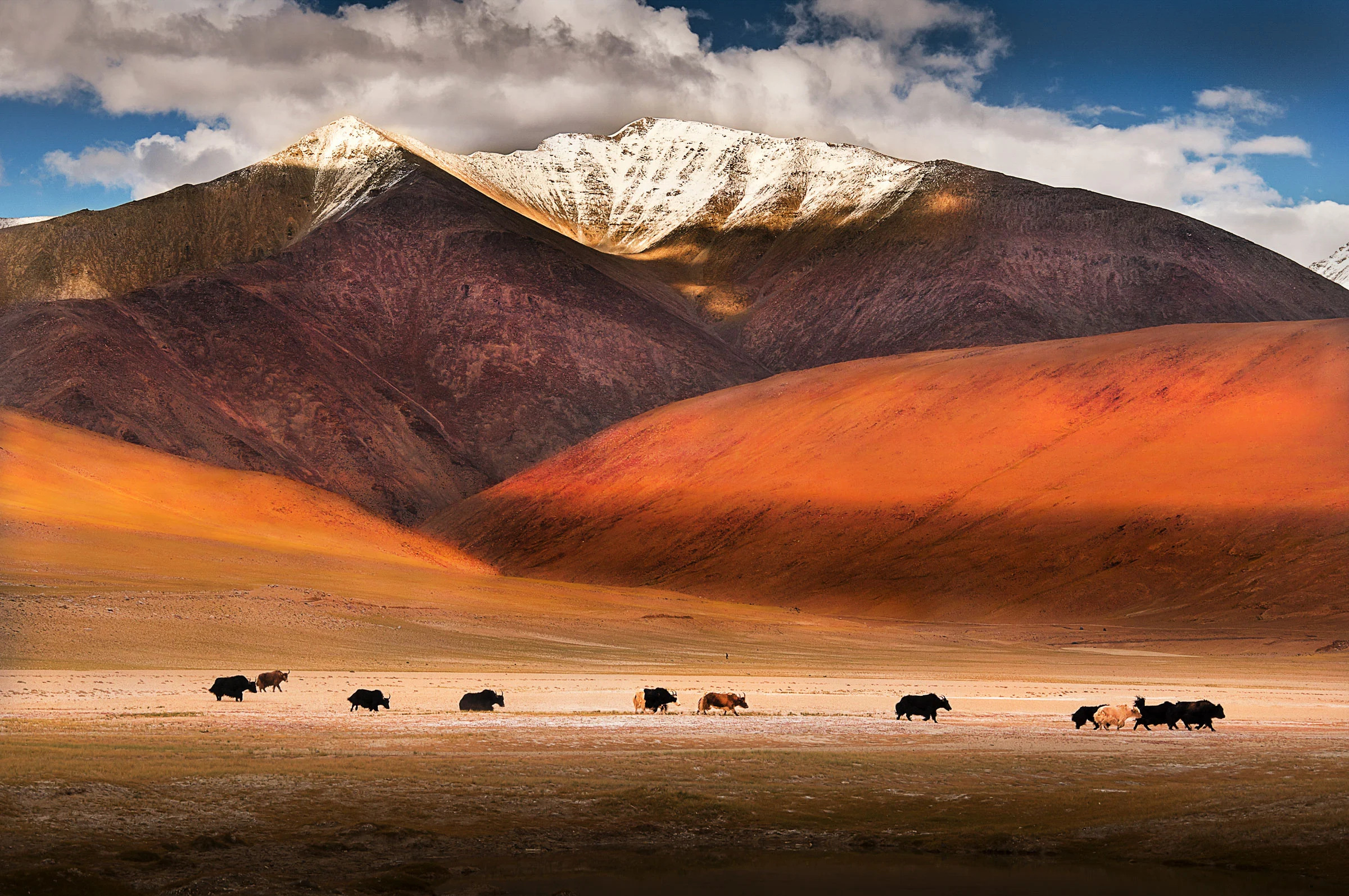
Surely one of the major reasons why this mountainous beauty — declared a Union territory in 2019 — has been a bone of perpetual contention between India and Pakistan is its unmatched scenic beauty which has earned it the appellation of Switzerland of Asia.
While its immediate neighbor, the Union territory of Jammu and Kashmir has been a hotbed for political contentions, violence and unrest, the Buddhist majority of Ladakh and Zanskar region is a calm haven for tourists despite its proximity to Kargil (which borders PoK (Pakistan occupied Kashmir)) and China.
Not surprisingly, given the resurgent worldwide interest in Buddhism this ‘moonscape’, ‘little Tibet’, and ‘the last Shangri La’ is attracting a rising number of domestic and foreign tourists. With its mountainous landscapes, snow-capped peaks, wind eroded valleys, icy deserts, ancient Buddhist monasteries where gentle monks spin prayer wheels in time-honoured tradition, Ladakh (pop. 300,000) recorded more than 500,000 tourist arrivals in 2022 — an impressive inflow, considering the region is accessible by road for only six months of any year. During winter, roads are blocked by heavy snowfall and the only access is by air with flights from Delhi and Srinagar, weather permitting. The airport — Kushok Bakula Rimpochee — is in Leh. Several private airlines ply flights from Jammu, Srinagar, Delhi, Chandigarh, Mumbai, and Kolkata.
The newly planned under-construction Zojila tunnel which is a Rs 25,000 crore project is envisioned to establish an all-weather connectivity between the Union territories of Ladakh and Jammu and Kashmir. It is also likely to boost tourism even in the lean season.
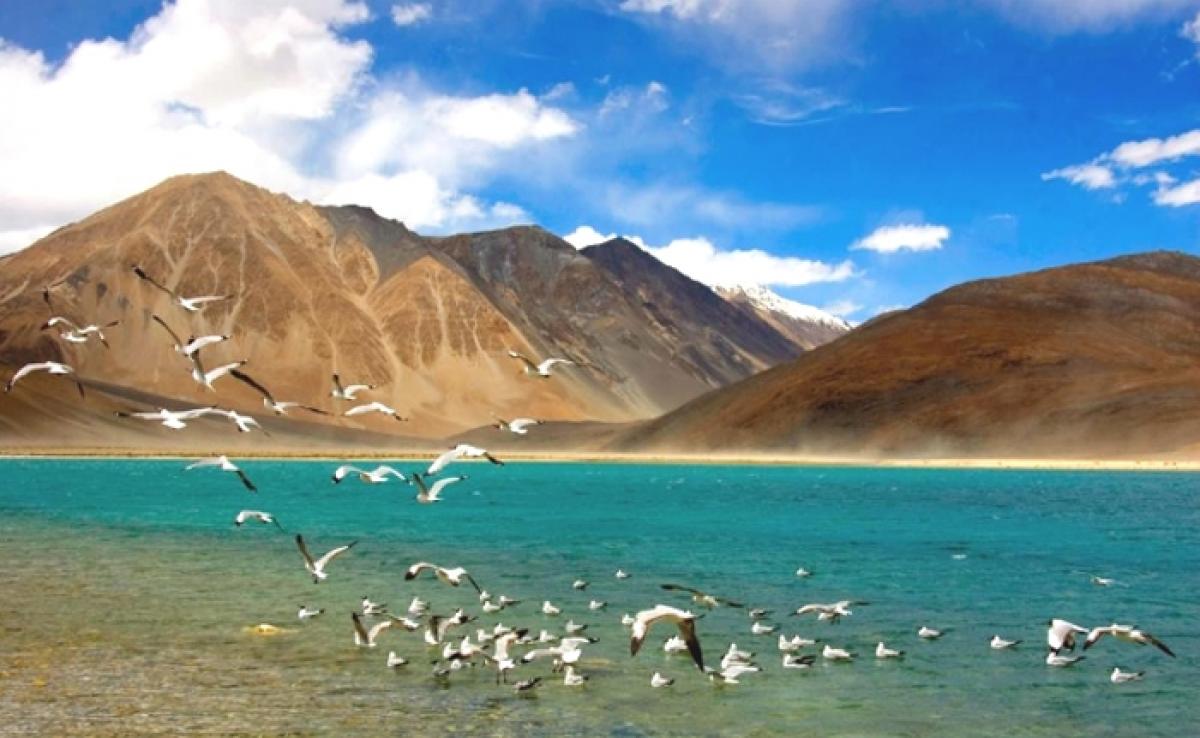 Contemporary Ladakh comprises the Buddhist dominated Leh and Nubra valleys and the Muslim dominated Kargil and Suru valleys. The region sprawls over an area of 59,146 sq. km and constitutes a basin surrounded by the Great Himalaya Range in the south-west, the eastern Karakoram range to the north, and the Stok range in the south-east. Moreover, Ladakh hosts several great lakes including the Pangong Tso, the world’s largest brackish water endorheic lake. However, visitors, especially foreign visitors, should note that given Ladakh’s proximity to China and Pakistan, access to certain parts of the region is restricted and a special permit is required from the district magistrate in Leh to visit some distant areas.
Contemporary Ladakh comprises the Buddhist dominated Leh and Nubra valleys and the Muslim dominated Kargil and Suru valleys. The region sprawls over an area of 59,146 sq. km and constitutes a basin surrounded by the Great Himalaya Range in the south-west, the eastern Karakoram range to the north, and the Stok range in the south-east. Moreover, Ladakh hosts several great lakes including the Pangong Tso, the world’s largest brackish water endorheic lake. However, visitors, especially foreign visitors, should note that given Ladakh’s proximity to China and Pakistan, access to certain parts of the region is restricted and a special permit is required from the district magistrate in Leh to visit some distant areas.
The earliest inhabitants of Ladakh were the Khampa nomads who grazed their yaks on its high pastures. Permanent settlements along the river Indus were established by the Mons, Buddhist pilgrims on their way from India to Mt. Kailash in Tibet.
Tsongkhapa, a Tibetan pilgrim introduced a new Buddhist order in Ladakh known as Gelupka, headed by the first Dalai Lama at the end of the 14th century. In the years following, the Balti-Kashmiri armies launched a series of attacks on Ladakh and in the early 16th century King Ali Mir of Baltistan defeated the nomadic tribes and annexed the region. But in the later part of the 16th century King Singge Namgyal declared independence and established Leh as his capital. The Namgyals continued to rule till the end of the 17th century when they were threatened by a combined force of Mongol and Tibetan armies. Help was solicited by the outnumbered Namgyal army from the governor of Kashmir owing allegiance to Mughal emperor Aurangzeb. As a tribute a mosque was established in Leh’s main bazaar, and Singge Namgyal was able to re-establish control over Zanskar and Nubra valleys.
In 1830, a Dogra army from Jammu successfully invaded Ladakh under the leadership of Zorawar Singh and exiled the king to Stok. Ladakh became a part of Maharaja Gulab Singh’s independent state of Jammu & Kashmir. After independence it continued to be a district under the erstwhile state of Jammu & Kashmir (now a Union territory) until 1995 when the Ladakh Autonomous Hill Development Council (LAHDC) was established to confer limited autonomy upon the people of the region.
Leh
LEH (pop: 30,900) is the largest city in Ladakh, nestling to the north of the Indus valley at a breath-taking height of 3,500 meters above sea level. The city had close trade links with central Asia until the early 20th century — yak trains would start from Leh and reach Yarkand and Kashgar via the Karakoram pass. Today Leh is a strategic centre for the Indian Army which has a large presence here, as the city is close to the sensitive borders India shares with Pakistan and China. Leh was opened to foreign tourists in 1974 and since then there has been a large inflow of domestic and international tourists into the town.
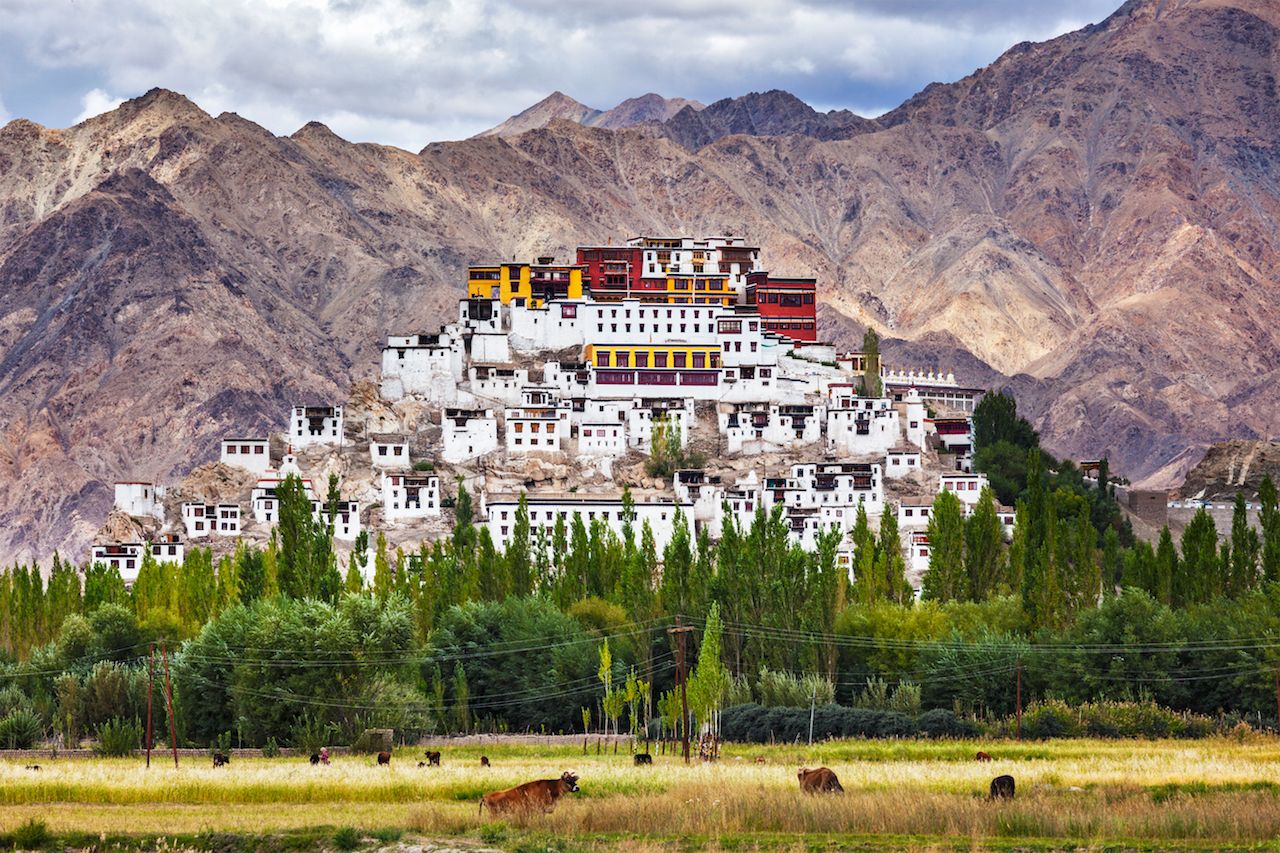 The Leh Palace — erstwhile home of the Ladakh royals before they were exiled to Stok, dominates the city. A little higher on Namgyal hill is the Victory fort, built to commemorate the victory of the Ladakh army over Balti-Kashmir armies in the 16th century. Today the fort is in ruins but offers a superb view of Leh from here. A steep path leads you to the fort from the Leh Palace road. True to its description of Little Tibet, Leh is dotted with Buddhist monasteries (gompas), traditionally built on hilltops in and around the town. A popular Buddhist belief is that a prayer offered from the top of a mountain reaches the heavens faster.
The Leh Palace — erstwhile home of the Ladakh royals before they were exiled to Stok, dominates the city. A little higher on Namgyal hill is the Victory fort, built to commemorate the victory of the Ladakh army over Balti-Kashmir armies in the 16th century. Today the fort is in ruins but offers a superb view of Leh from here. A steep path leads you to the fort from the Leh Palace road. True to its description of Little Tibet, Leh is dotted with Buddhist monasteries (gompas), traditionally built on hilltops in and around the town. A popular Buddhist belief is that a prayer offered from the top of a mountain reaches the heavens faster.
The Namgyal Tsemo Gompa built in 1430, contains a striking three-storey-high Buddha image, and ancient manuscripts and frescoes. The Soma Gompa located in the bazaar area is the main place of worship for Buddhists in Leh. Colourful murals and large images of the Buddha make the Soma Gompa a must-see for every tourist. Sankar Gompa is interesting with an impressive representation of the Buddhist deity of compassion — Avalokitesvara (Chenresig) complete with 1,000 arms and heads.
A trip to Leh would be incomplete without a visit to the Hall of Fame — a museum showcasing Ladakh’s culture and military history. The museum was established to commemorate the victory of the Indian Army over a Pakistani intrusion in 1999. It houses an impressive collection of traditional clothing, military equipment used in the region and art of Ladakh’s royal family.
Shopping. The Moti Market in Leh has numerous shops vending local specialties, Tibetan handicrafts, silver jewellery, pashmina shawls, organically grown apricots, walnuts etc. The Tibetan Market on Old Leh road offers western products from mysterious sources including high-quality fleece jackets, rucksacks, bags and sunglasses.
Getting there. Most of Ladakh is accessible by road only during the summer months. Regular buses ply from Manali and Srinagar; the journey takes two and half days from Manali and two days from Srinagar. Direct flights operate between Delhi, Jammu, Indore, and other locations to Leh’s Kushok Bakula Rimpochee Airport. In winter these flights take wing only on clear days given that Leh hosts the world’s highest altitude commercial airport. Visitors arriving by air are advised to take it easy for at least two days to become acclimatized to the low oxygen content in the high-altitude environment.
Accommodation. Top end: The Abudz (Rs.21,702 per night), Hotel Tsokar Retreat (Rs.6,464), The Bodhi Tree (Rs.6,278); Mid Range: Hotel New Glacier View (Rs.3,731), The Nature Residency-A Riverside Resort (Rs.2,886), Hotel Asia (Rs.2,309); Budget: Eco Homestay (Rs.2,416), Orion Home (Rs.991), 4 View Ladakh Rooms (Rs.888).
Restaurants. Most hotels host restaurants offering a wide range of cuisine. In local parlance bakeries are usually restaurants offering continental food — apple pie, cheesecake, salted dry fruits, bread etc.
Excursions. Ex Leh there are several day excursion options to neighbouring villages and memorable gompas. Among them: Spituk Gompa (8 km), built in the 15th century has two prayer rooms with imposing bronze statues of the Buddha, Taradevi and Maitreya; Magnetic Hill (26 km) offers visitors a chance to witness the strange phenomenon of automotive vehicles defying the law of gravity; Alchi, the only gompa in Ladakh built on flat ground hosts numerous clay statues; Choglamsar, an important centre for Tibetan Buddhism and culture studies and Hemis Gompa (45 km) one of the most accessible and popular gompas in Ladakh.
Also worth a visit is the Shey Gompa/ Palace. Fifteen km from Leh atop a hill, Shey Gompa is the former summer palace of Ladakh’s royals. The Tso Morri or mountain lake and Pangong Tso (the longest lake in the world) located in Rupsu valley are also popular excursions ex Leh.
Nubra Valley
THE NUBRA — OR GREEN — Valley was an important stop on the trade route connecting Tibet with Turkistan. Also known as the Valley of Flowers, Nubra is well cultivated and fertile and enjoys the best climate in the region. Dominated by a massive broad, denuded flood plain through which the Nubra and Shyok rivers flow, the valley teems with dense forests, charming villages and a vast area covered by sand dunes.
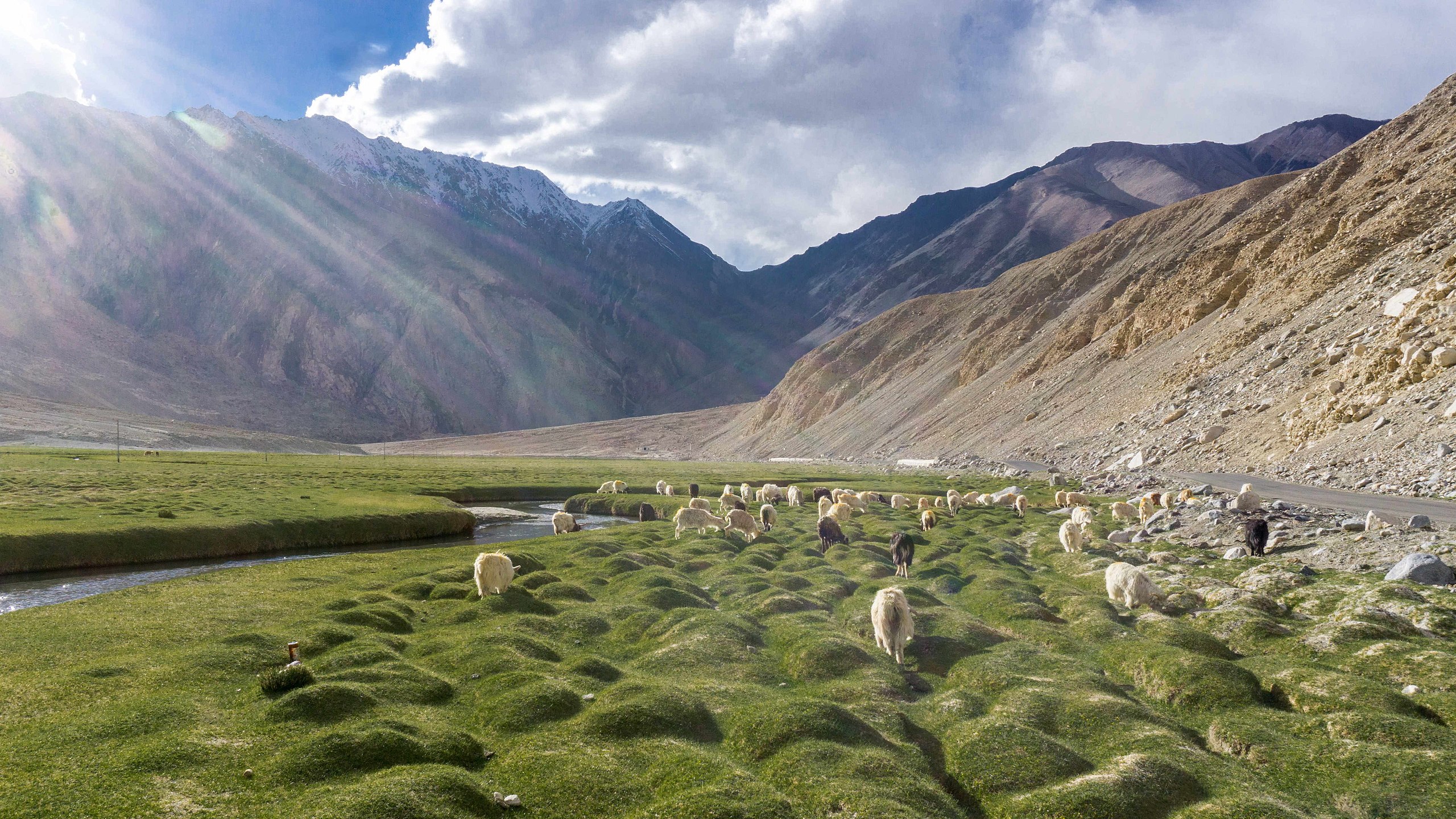 The proximity of the Nubra valley to the world’s highest battlefield — the Siachen Glacier — makes it an inner security line area necessitating all visitors — Indian and foreign — to acquire a permit to visit this exotic valley. The permit is issued by the district magistrate’s office in Leh. Even so its validity extends only to Hunder in the south and Panamik in the northern part of the valley.
The proximity of the Nubra valley to the world’s highest battlefield — the Siachen Glacier — makes it an inner security line area necessitating all visitors — Indian and foreign — to acquire a permit to visit this exotic valley. The permit is issued by the district magistrate’s office in Leh. Even so its validity extends only to Hunder in the south and Panamik in the northern part of the valley.
Getting there. The only means of access to this remote valley is by road. Officially this road is open throughout the year, but in winter it could be closed for many days at a stretch. Buses ply from Leh to Diskit twice a week.
Diskit. Nestled amid high mountains and flanked by the River Shyok on one side is the tiny village of Diskit which boasts a VSAT equipped cybercafé thanks to the army initiative of linking remote villages through VSAT internet connections. The cybercafé is accessible to tourists at specific timings. The Diskit Gompa is more than 500 years old and is the largest in the Nubra Valley. Visages of the huge statues in this gompa are unveiled only during a festival in February each year.
A few miles from Diskit towards Hunder is an area marked with sand dunes, which is surprising because all around are snow-capped mountains. And as if to prove itself a desert, Diskit is the natural habitat of the double-56, the Nubra Valley humped Bectarian camel. A one-day camel safari from Diskit to Hunder priced at Rs.500 including lunch is recommended.
Accommodation. Top end: Panah — Dessert Himalaya Resort (Rs.11,663 per night), The Earthen Retreat (Rs.10,730), The Dunes Ladakh (Rs.7,268); Mid-range: Nubra Ecolodge (Rs.4,871), Hunder Resort (Rs.4,585), Hotel Snow Leopard (Rs.4,238); Budget: Imperial Eco Cottage (Rs.2,608), Apple Cottage (Rs.2,841), Himalayan Bunker (Rs.733).
Panamik. An important village in Nubra valley, famous for its hot springs and the last point where tourists are allowed. Beyond Panamik, other than residents only military personnel are allowed. The waters of the spring have healing properties for rheumatism and other ailments. The 250-year-old Ensa Gompa is another interesting Buddhist monument here.
Accommodation. Panamik has only two accommodation options: the Silk Route guest house (Rs.100-200) open only during summer and a government run tourist bungalow, open through the year.
Kargil
The second largest town in Ladakh, Kargil lies midway between the alpine valleys of Kashmir and the fertile reaches of the Indus valley. Until 1947 Kargil was an important trading centre linking Ladakh with Pakistan. It is the starting point of trekking expeditions to Padum, Suru and Zanskar valleys. Located on the banks of the roaring River Sum, Kargil has only one main road, with lots of little lanes abutting. A walk across the Qatilgah bridge at the end of Balti bazaar road presents a panoramic view of the Suru valley.
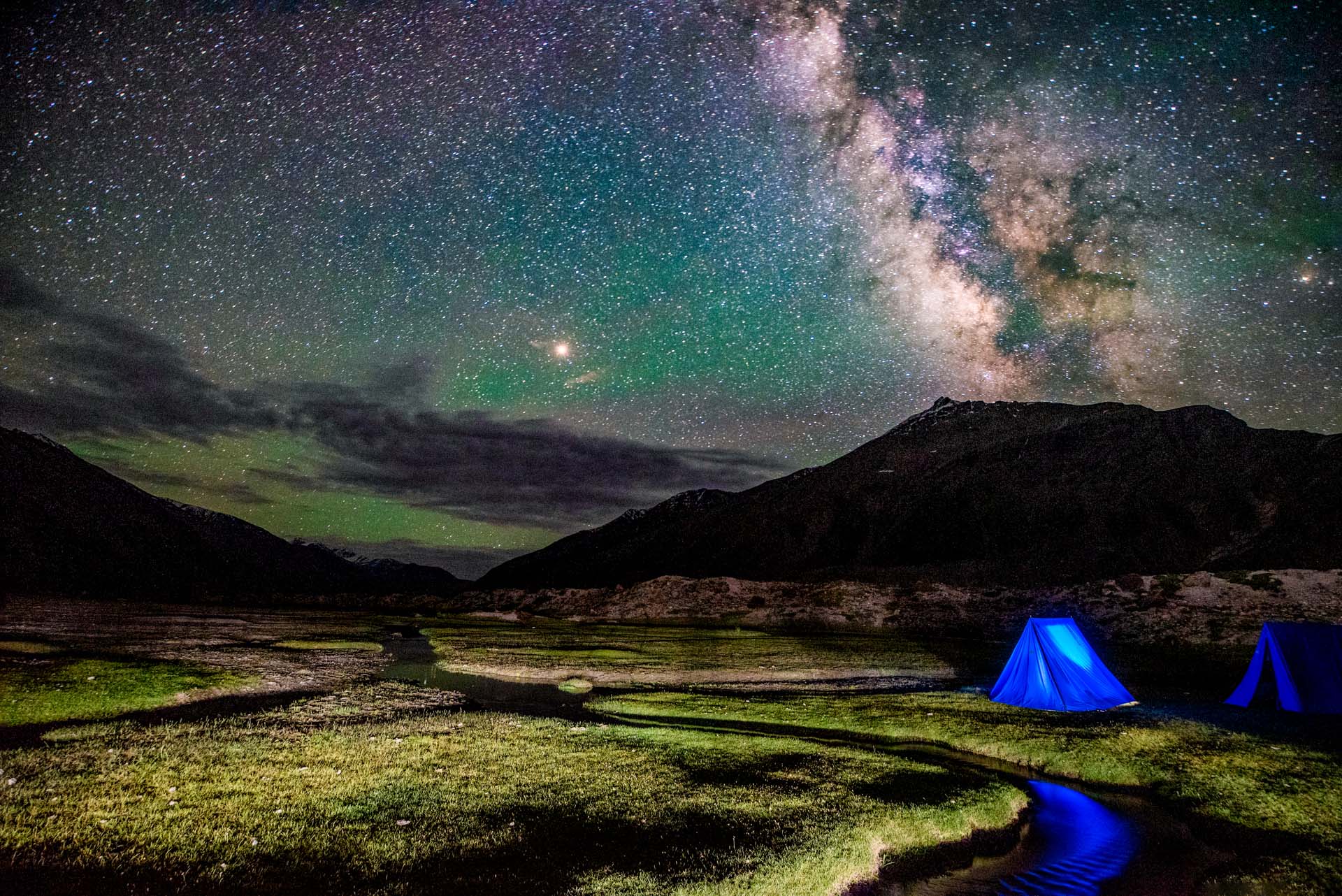 Excursions. Kargil offers several interesting one-day excursions in its vicinity. The more popular among them are: Mulbek (40 km), with an impressive eight meter high Maitreya statue cut into a sheer rock face dating back to circa 700 AD; the Serdung and Gandentse gompas offering great views of the valley; Sanku (20 km), famous for a Muslim shrine dedicated to Sayed Mir Hashim; Panikhar village (50 km) down the Suru valley with spectacular views of the twin peaks Nun (7135 m) and Kun (7087 m).
Excursions. Kargil offers several interesting one-day excursions in its vicinity. The more popular among them are: Mulbek (40 km), with an impressive eight meter high Maitreya statue cut into a sheer rock face dating back to circa 700 AD; the Serdung and Gandentse gompas offering great views of the valley; Sanku (20 km), famous for a Muslim shrine dedicated to Sayed Mir Hashim; Panikhar village (50 km) down the Suru valley with spectacular views of the twin peaks Nun (7135 m) and Kun (7087 m).
Adventure Sports Trekking. There are interesting trekking routes in the region with agencies in Leh offering treks with a guide, packhorses, food, and supplies. An all-inclusive trek is priced at around Rs.20,000 to 50,000 per trek. The ideal trekking season is June-September.
River rafting. White water rafting expeditions are popular on the Indus and Zanskar rivers. Several travel agencies in Leh organise guided white water rafting trips of three-five days duration.
Motorcycling. Riding a motorcycle is perhaps the best way of getting around Ladakh. Even if you arrive at Leh by air and wish to ride a bike around Ladakh, you can hire one at many of the agencies in Leh for Rs.2,000 per day, plus petrol.
Mountain biking. This sport is quite popular among foreigners who fly into Leh with their bicycles and crate their bikes when they return home.























